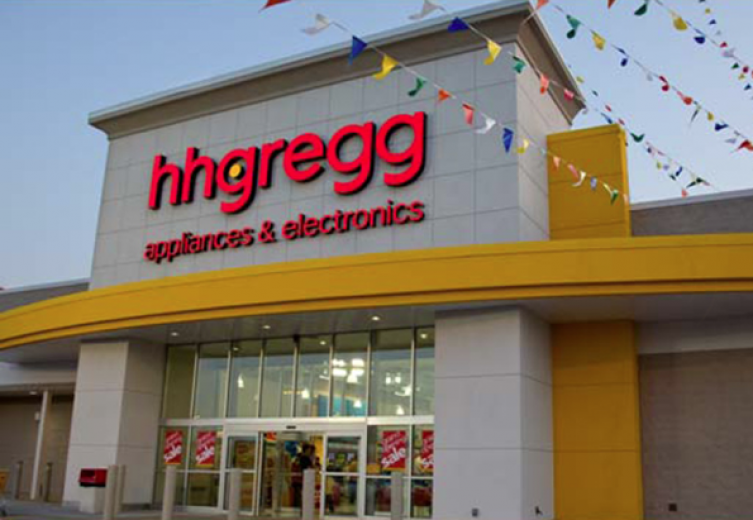1 10
1 10
ADVERTISEMENT
10. HHGregg
Regional electronics seller hhgregg may have been the retail industry’s darling right after the recession, but it’s starting to face the same pressures as national competitor Best Buy, reporting a fall of 11.2 percent in same-store sales for its most recent fiscal quarter. It has also, inexplicably, started to sell furniture and exercise equipment. Analysts say there’s plenty of time for the retailer to right itself, but it will have to step up its game in terms of customer experience and store design.
9. Toys R Us
Toy’s R’ Us’ troubles may be less obvious than some of its peers’, but there is a reason private owners Bain Capital Partners, KKR and Vornado Realty Trust have been forced to hold the chain much longer than the typical five- to seven-year private equity turnaround period. For the full fiscal year 2013, the toy seller reported a 5.0 percent decline in domestic same-store sales, a 3.3 percent decline in international sales and a gross margin loss of 1.6 percent. Meanwhile, it’s facing a $5 billion long-term debt load.
8. Best Buy
Best Buy may not be facing an imminent demise or bankruptcy, but the electronics retailer has had an awfully hard time over the past few years. Initially having benefited from the liquidation of Circuit City, it now has to compete against that Goliath of the retailing world, Amazon. Same-store sales fell 0.8 percent for the full fiscal year 2014, after a decline of 3.5 percent in fiscal 2013.
7. American Apparel
Even though the risqué clothing retailer managed to stick around, the company reportedly hasn’t turned a profit since 2009. It’s competing in a sector crowded with mainstays like The Gap and American Eagle and fast fashion powerhouses including Forever 21 and Uniqlo and it doesn’t offer either great fashion or great value. At the end of March, the company had to sell $30.5 million in shares to pay down interest on a loan and may have to restructure to stay afloat.
6. Coldwater Creek
The Wall Street Journal has reported that the women’s apparel chain is getting ready to file for bankruptcy, facing more than $350 million in debt. And there are rumblings that the bankruptcy will be followed by liquidation. In the third quarter, same-store sales declined a whopping 16.8 percent. Coldwater Creek has closed about 50 stores over the past two years and plans to close another 10 to 15 stores in 2014.
5. Brookstone
The lifestyle retailer filed for Chapter 11 bankruptcy this month, undone by high levels of debt and lackluster sales (in the third quarter, same-store sales decreased 0.7 percent on a year-over-year basis). But not all is lost—Spencer Spirit Holdings, which operates Spencer’s and Spirit Halloween, is reportedly planning to buy the chain for $147 million.
4. Barnes & Noble
The last big-box book retailer standing, Barnes & Noble has a few things going in its favor, including the strength of its store locations and its supremacy in the bricks-and-mortar book universe. But its attempt to compete with Apple and Amazon with its own e-reader seems to have been a failure and this week, Liberty Media, a major stakeholder, has cut its investment in Barnes & Noble by 15 percent. For the third quarter of fiscal 2014, the most recent period for which data is available, the company reported a 4.9 percent decline in same-store sales and a 6.3 percent decrease in retail revenues.
3. JCPenney
Penney has been lagging stronger rivals Macy’s and Kohl’s for a while, but after former shareholder Bill Ackman installed Apple retail chief Ron Johnson at the helm in late 2011, attempting to modernize J.C. Penney’s strategy, all hell broke loose, leading to confused customers and falling sales. Since Johnson’s ouster, however, the chain’s management has been hard at work trying to save it. The company reported a 2 percent increase in same-store sales for the fourth quarter of fiscal 2013 and a 3.1 percent uptick in sales for the November/December holiday shopping season.
2. Radio Shack
Competing as a bricks-and-mortar entity in the consumer electronics sector has proved to be a challenge for most retail players, but Radio Shack looks like it may be the next one to fall. In March, the company’s management announced it would be closing 1,100 stores, or roughly 20 percent of its fleet—never a good sign. In the all-important fourth quarter, Radio Shack’s same-store sales nosedived 19 percent, while for the full fiscal year same-store sales were down 8.8 percent.
1. Sears
The once mighty department store chain has been selling off real estate and getting rid of various divisions in the past few years, while sales have continued to fall. During fiscal 2013, same-store sales fell 3.8 percent while revenue declined by $3.7 billion and there was a $681 million loss on gross margins. The question has long ago stopped being whether Sears will disappear, according to retail analysts. It’s now a question of when it will fall.

